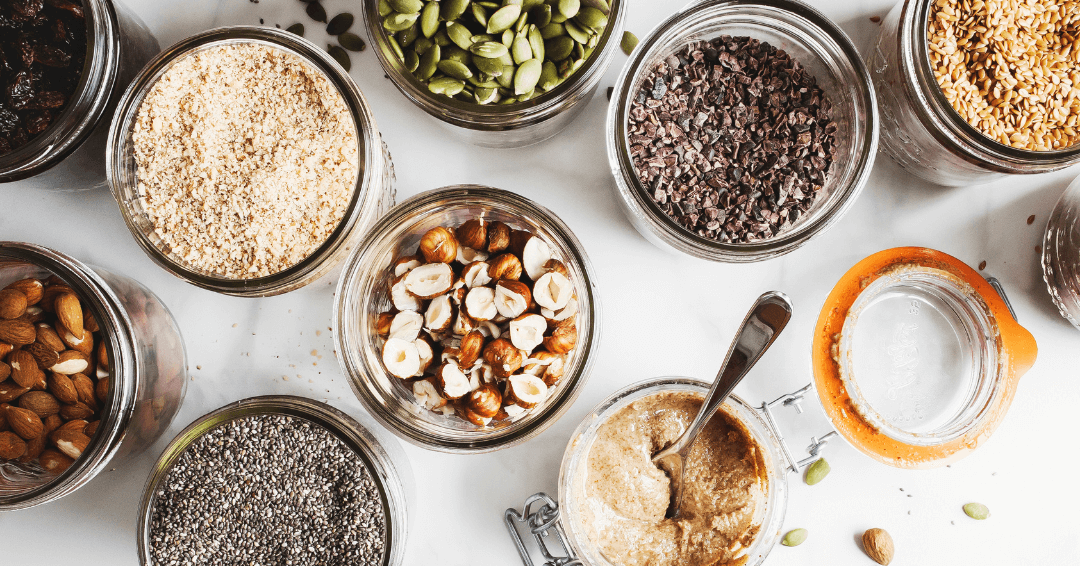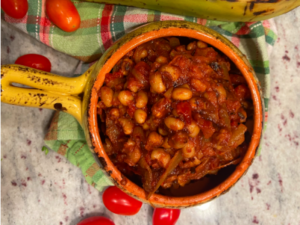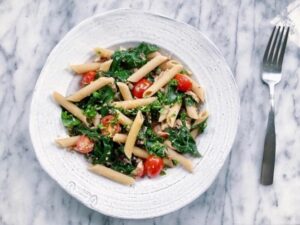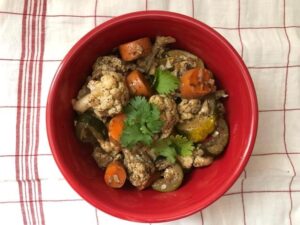
Despite spanning regions all over the world, heritage diets are more alike than they are different. Although you can absolutely choose to strictly adhere to a Mediterranean, African, Latin American or Asian heritage-based way of eating, there is enough overlap that you can also experiment day-to-day!
Not only are heritage diets healthy and delicious, but they’re also incredibly accessible. You don’t need to get fancy or expensive ingredients to dive in. In fact, there are plenty of pantry staples you can stock up on to ensure you can try any heritage diet, any time:

Beans
Traditional cooks soak dried beans overnight before cooking them, but when you’re in a hurry, canned beans are a great convenience, and they deliver plenty of inexpensive protein as well as fiber. Include canned cannellini beans, pinto beans, black beans or chickpeas (garbanzo beans) in your heritage diet meals, and as an additional tip, get into the habit of draining them in a colander and rinsing them well under cold water to remove as much sodium as possible.
Arroz Congri with Brown Rice and Black Beans
Chana Masala (Spicy Tangy Chickpeas)

Whole Grains
The world of whole grains is delicious, diverse and expansive: from millet in the African Heritage Diet to amaranth in the Latin American Heritage Diet, these nutrient-dense foods make up a crucial pillar of heritage-based eating.
When it comes to whole grains, the best way to get started is to be adventurous. Because they keep so well in the pantry, stock up and use them as a tool to explore new recipes.
Chai Spiced Amaranth Porridge with Caramelized Bananas

Pasta
A healthy pasta meal is truly the sum of its parts and features two key factors: what you pair with your pasta, and how much pasta you eat in a meal. Pasta’s versatility allows for almost endless (and affordable!) preparations.
Your pantry pasta dishes can be as simple as pasta with al dente vegetables, grated cheese and extra-virgin olive oil, pasta with roasted vegetables, or pasta with a simple tomato sauce. Healthy pasta meals are a balance of pleasure and health!
Beet Green Pesto Pasta with Zucchini and Chickpeas

Tomato: Canned, Sundried, Paste
And speaking of tomato sauce, tomatoes are a true heritage diet staple. Of course, they are delicious fresh, but they’re also a versatile canned and sundried staple that partners beautifully with herbs and other vegetables in a wide range of traditional dishes.
Peanutty Oaxacan-Flavored Turkey Chili

Nuts and Seeds
Nuts are a fabulously versatile source of many important nutrients. Keep a range of walnuts, hazelnuts, peanuts, pumpkin seeds or whatever else appeals to your taste buds, and get creative! Try adding them to grain dishes, tossing them into salads, sprinkling them on pasta, grinding them to make delicious dips and spreads, and pairing them with heritage spices in desserts.
Roasted Butternut Squash with Spelt
Lemon Bars with Tahini Cookie Crust

Canned Fish
Fish are an essential part of the Mediterranean Diet, in particular, but also fit nicely into any heritage diet.
Seafood in general contains several essential nutrients that are important to help keep people healthy throughout one’s lifespan. Omega-3 fatty acids, found primarily in seafood, support brain health, heart health, and healthy development in children. Many fish are also good sources of protein, iron, vitamin D, vitamin B12, and selenium.
One way to obtain the fabulous health benefits of fish while cutting the cost is to opt for canned fish such as tuna, salmon and sardines…
Whole Grain Pasta with Sardines and Swiss Chard
Jalapeño Corn Salmon Patties with Cilantro Lime Sauce
 Olive Oil
Olive Oil
It’s hard to think of a reason not to use olive oil every day. It keeps well, has a delicious taste, and offers remarkable health benefits. Olive oil is an example of a heart-healthy fat source, because it consists primarily of monounsaturated fatty acids. Replacing saturated fats (such as those found in butter, lard, and coconut oil) with monounsaturated fats is linked with a significantly lower risk of heart disease.
Olive oil also contains polyphenols: antioxidants linked to many health benefits, including decreasing inflammation, regulating blood sugar, and potentially reducing the risk of heart disease and cancer.
Finally, olive oil is easy to incorporate into any meal, whether it’s used to sauté vegetables in, as a dressing, or as the predominant flavor of a dish.
Orzo with Feta, Olives, Tomatoes and Dill
These staple items are just the beginning! In addition to these suggestions, try building your own repertoire of herbs and spices based on your favorite flavors, and take inventory of the items you tend to reach for when you go to the grocery store so you can solidify some of your favorite go-to recipes.
That way, when it comes to immersing yourself in heritage diets, it can be as easy as opening the pantry door!






Leave a comment